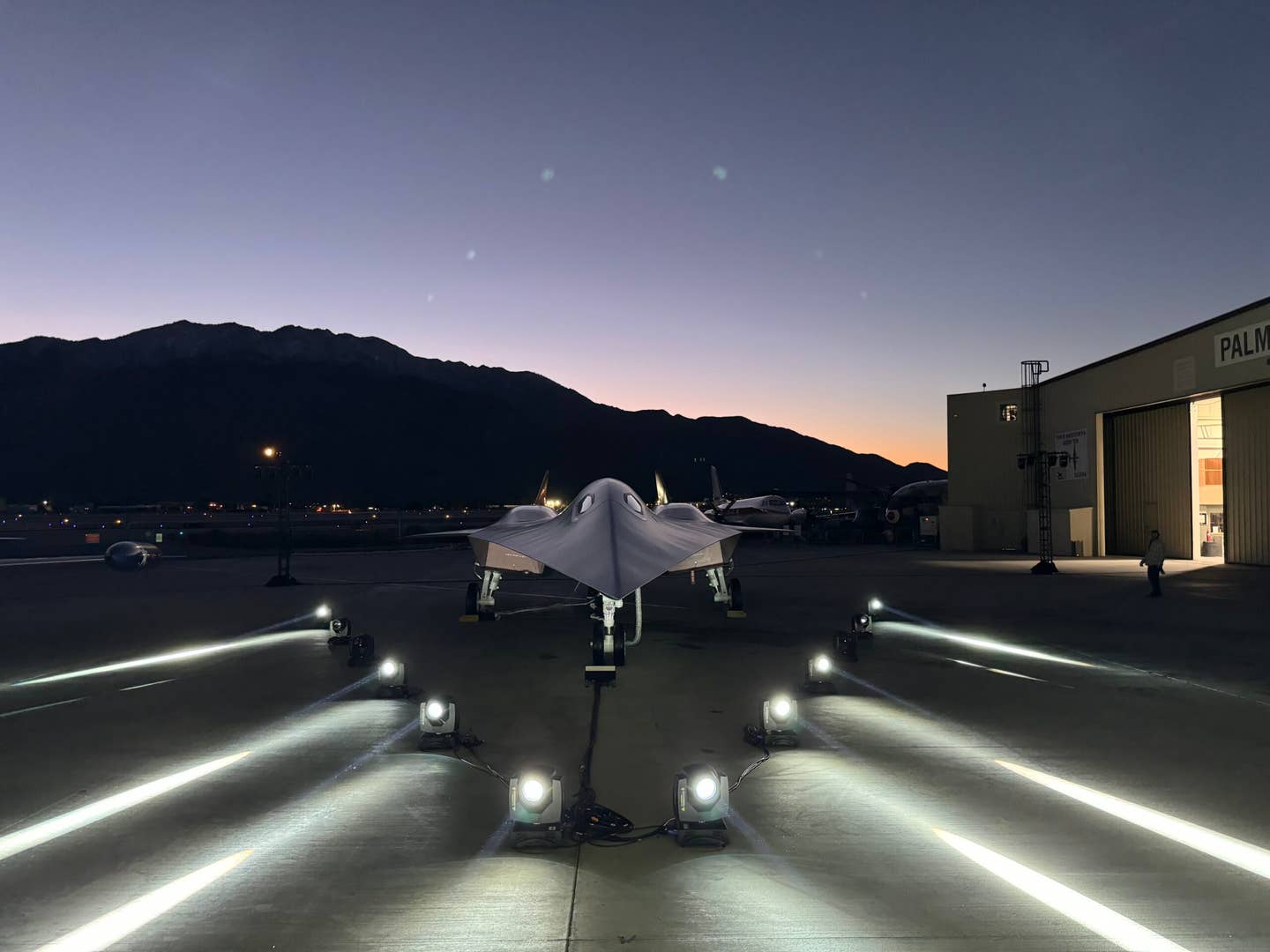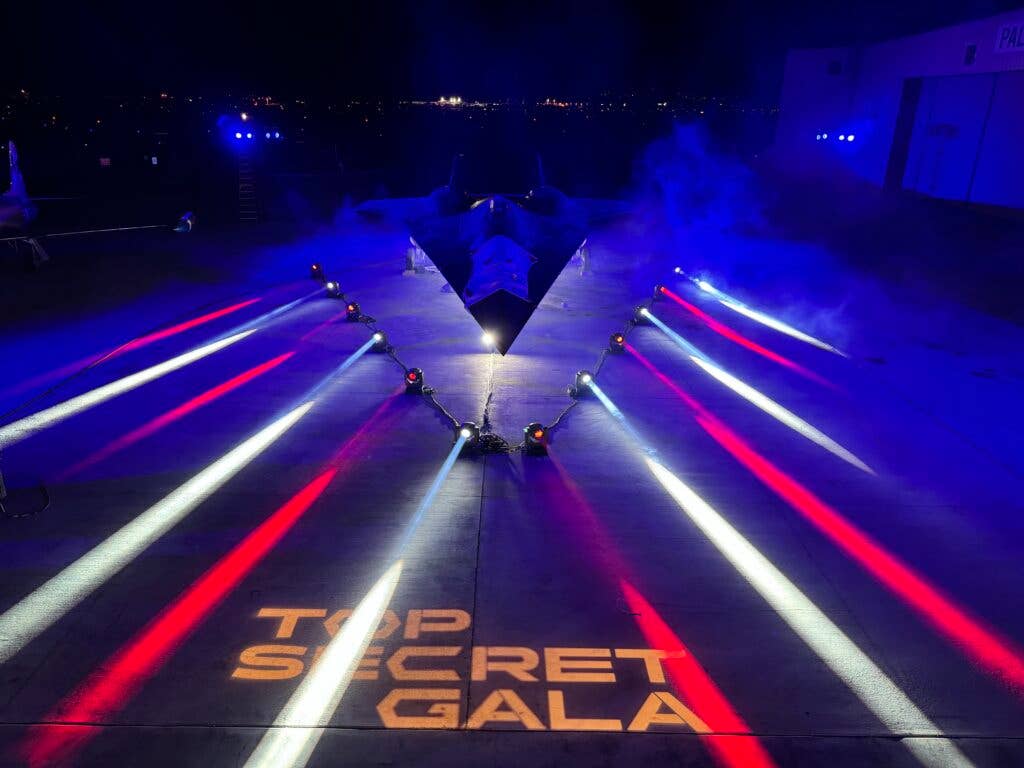Movie Star Airplane Appears in Palm Springs Aviation Museum
Built by Lockheed Martin, “Darkstar” is now on display in California.

Built by Lockheed Martin, “Darkstar” appeared in the movie ‘Top Gun: Maverick.’ [Courtesy: Fred Bell]
If the aircraft is fast and stealthy, there is a good chance it was designed and built by Lockheed Martin. That includes “Darkstar,” the reusable, piloted hypersonic aircraft flown by Captain Pete "Maverick" Mitchell in Top Gun: Maverick. The airplane used in the movie is now on display at the Palm Springs Air Museum in California.
For the unfamiliar, Top Gun: Maverick is set 30 years after the original film. Maverick is still a naval aviator, highly decorated, but with an uncanny ability to get into just enough trouble to keep from getting promoted out of the cockpit. He is the test pilot for the hypersonic Darkstar scramjet. We're never told explicitly what Darkstar's mission is, but it is noted that the government wants to pull the funding for the project in part because it hasn’t yet reached the contract spec of Mach 10 (7672.691 mph).
Maverick suits up for a test flight. He is cautioned to obey the parameters of it and not to exceed Mach 9 (6,905.42 mph). But this is Maverick we're talking about. He pushes the aircraft to Mach 10, destroying it in the process. Tom “Iceman” Kazansky, Maverick's contemporary who has advanced in rank, saves his friend's career by sending him to the Top Gun school at NAS North Island, where he is charged with training the next generation of naval fighter pilots while battling his inner demons—one of the nuggets is the son of his backseater, Nick "Goose" Bradshaw, who was killed in the first movie.
There is a lot of fancy flying in the movie, and it has generated hours of debate in FBOs and online from pilots and aviation enthusiasts who wonder if Darkstar is real and not the Queen Mother of a scale model movie prop.
(Reality check: The closest a piloted aircraft has come to Mach 10 is the SR-71 Blackbird designed by Lockheed’s Kelly Johnson during the Cold War that reached Mach 3.3 or 2,531.988 mph.)
According to Fred Bell, vice chairman of the Palm Spring Air Museum, Darkstar represents the sixth generation of aviation stealth technology. The conceptual design for it—not to be confused with a drone project of the same name—was created by Lockheed Martin Advanced Development Programs.
Lockheed Martin Meets Hollywood
In 2017 Hollywood producers who wanted a hypersonic design for the movie approached Lockheed Martin asking for a conceptual design—could anything go that fast? They knew aviators and other “rivet counters” (the polite term for the people who pick apart aviation movies as though their parentage has been insulted) would be unmerciful in their criticism unless some effort was made to at least embrace the laws of physics and reality.
The Lockheed Martin designers came up with an aircraft that looks very much like a cross between two other of its models: the SR-71 Blackbird—SR stands for Strategic Reconnaissance—the now retired, super-fast design; and the Lockheed Martin F-35, also known as “the world’s most advanced fighter jet.”
In the movie, Darkstar has some dramatic and moving scenes. For example, on the morning of the test flight the camera pans the aircraft in sort of a walk-around and shows a skunk image on the tail. The skunk is a trademarked by Lockheed Martin ADP, which is also known as Skunk Works, because in the 1930s the company was located in Southern California next to a plastics plant that gave off a horrible stench. Super-secret aircraft were developed there, and the term “skunk works” remains synonymous with a place where such technology is developed.
Secrecy is still a big deal, even with movie airplanes. The Darkstar designers are identified only by their first names: Jim, Jason, Lucio, and Becky. According to information provided by Lockheed Martin, when the movie premiered, Jim is credited with the conceptual design. Jason and Lucio handled the task of turning the conceptual designs into a realistic aircraft model with a working cockpit. Becky, a mechanical engineer, worked with the movie team to build the Darkstar vehicle, including the functional cockpit, and kept the model structurally sound during the filming process.


This is no scale model, noted Bell.
"It measures 40-feet wide by 70-feet long,” Bell said. “It is a dagger shaped aircraft with a tremendous amount of detail. On the landing gear the serial number of the tires are stamped on the wheels. The cockpit has an articulating canopy that opens and inside you will see a Lockheed Martin Skunk Works control stick."
The aircraft even has panel covers that read, “REMOVE BEFORE FLIGHT,” and on the tail there is the famous skunk standing confidently on its hind legs with his front paws folded on its chest.
Darkstar belongs to Lockheed Martin. According to Bell, the company arranged to have the aircraft trucked to the museum and then its technicians and those of the museum reassembled it. When the aircraft was fully together, it was celebrated with a dual water cannon salute. It will be on display near other Lockheed Martin aircraft.
According to a spokesperson for Lockheed Martin, there are no plans to take Darkstar on the road for a tour as the size and complexity of moving it makes that untenable. If you want to see the aircraft up close, make the trip to Palm Springs to see the Darkstar Rising Experience. This includes a comprehensive design-to-cockpit tour, and talks from guest speakers as the museum explores the developments in stealth technology.
“We will have people talking about how the aircraft was created and how it was used in the movie, and will talk about stealth technology in general—where it came from and where it is going,” Bell said. “It's no longer enough to be fast."
Details, including ticket prices, can be found here.
The schedule is as follows:
February 24: The making of Darkstar
March 1: Behind the scenes: Darkstar comes to life, making movie magic
March 20: The next generation of stealth
March 27: The next generation of hypersonic aircraft
All viewings will take place from 5:30 p.m. to 7 p.m. PST.

Sign-up for newsletters & special offers!
Get the latest FLYING stories & special offers delivered directly to your inbox






